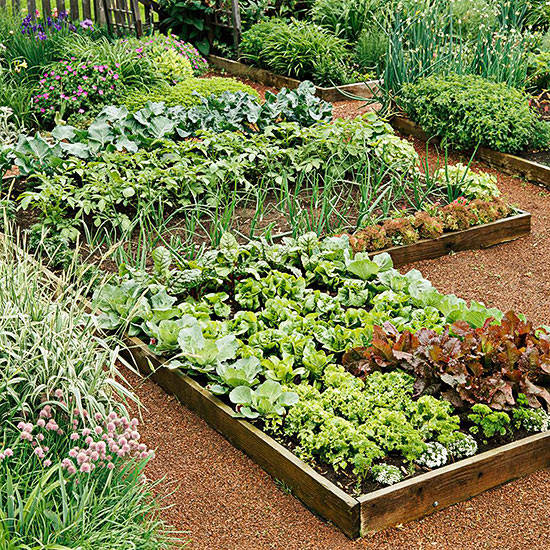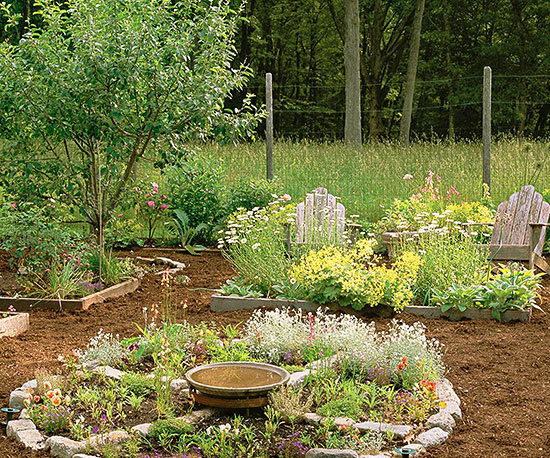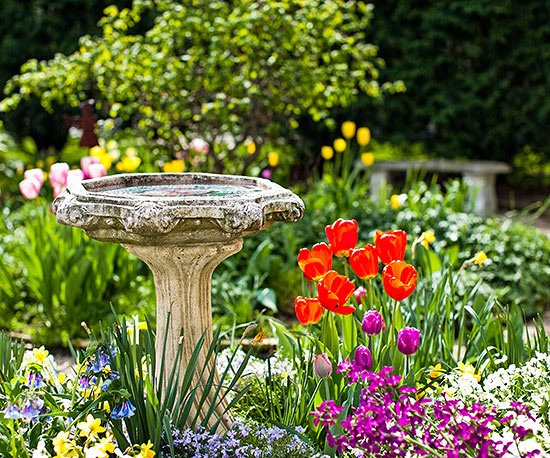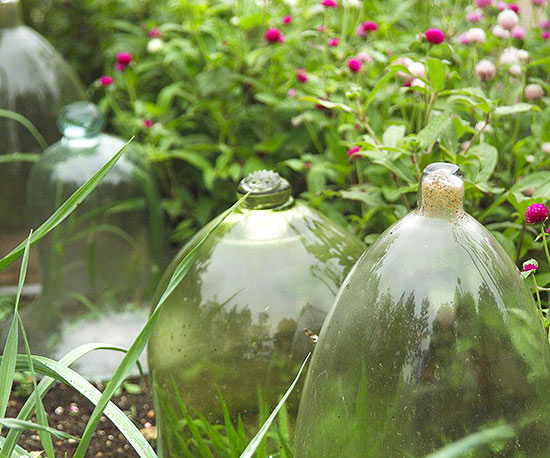






The Design
The goal of most kitchen gardens is to produce food efficiently and beautifully. Many gardeners choose to create a focal point, such as a collection of herbs or a more traditional sculpture or ornament. Some plants may dictate a garden design based on rows -- beans and peas, for example -- while other crops may require spreading or support, including cucumbers or tomatoes. Fruit trees add vertical interest and can camouflage nearby architecture; some varieties can be trained to grow flat against a wall, creating an espalier. Or you can set them in an allee (rows of trees flanking a path) leading to the entrance of the kitchen garden.
continue reading belowThe Plants
What do you like to eat? How you answer will tell you what you should plant in your kitchen garden. Before you pick up your shovel, consider the following:

1. Hardscaping
While planning to ensure an efficient harvest is important, you'll still need to include hardscape elements such as borders, paths, and support structures. Adding towers, cages, or other supports to crops such as tomatoes keeps them growing up -- and not over -- your other vegetables. A tower can be a sturdy, defined structure that adds a formal feel to the garden. Or it can be rustic, such as a tepee fashioned from three twigs to support an early crop of snap peas. Raised beds -- which can be made of stone, wood, or brick -- facilitate planting, growth, and harvest, and these geometrically shaped beds make a kitchen garden look organized and orderly. To keep out animals that may make a feast of your garden, consider including a fence.

2. Water Features
You may not want to encourage some types of wildlife -- raccoons, rabbits -- to visit your kitchen garden, but birds, bees, and butterflies can be welcome visitors. A birdbath can be a good way to encourage them.

3. Accents
Kitchen gardens may feature utilitarian but beautiful accessories. Blanching pots keep rhubarb, asparagus, and celery from turning green. Other kitchen-garden accessories include bee skeps and sundials, both traditional centerpieces for herb gardens. And garden cloches -- glass, bell-shaped coverings, right, that protect plants from temperature extremes -- also make beautiful garden ornaments.
Copyright © www.100flowers.win Botanic Garden All Rights Reserved